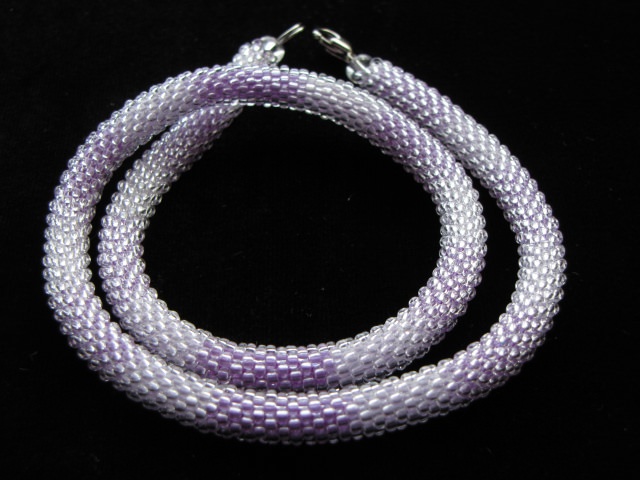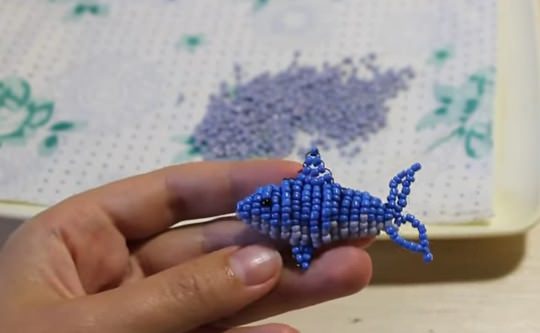
Dolphin of beads: weaving by our own hands according to the scheme (video)
Content
- Weaving the dolphin of beads according to scheme
- Video: Master class on weaving the dolphin from beads
Beads is a magical material from whichProduce a variety of decorations for the interior, as well as jewelry for personal use. But besides this, beads can be used to make a lot of small and very beautiful little things. These pleasant little things can be used, for example, as a keychain. Such things are done in the form of various insects, or animals. These can be small dogs and crocodiles, spiders or lizards. And today we'll figure out how to make a dolphin of beads.
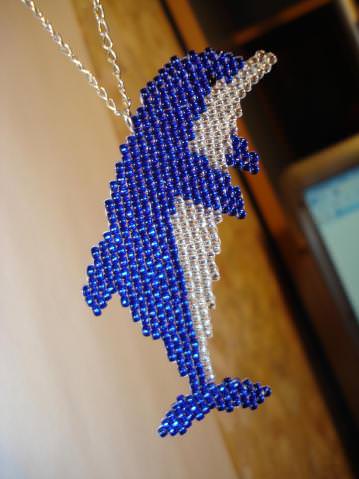



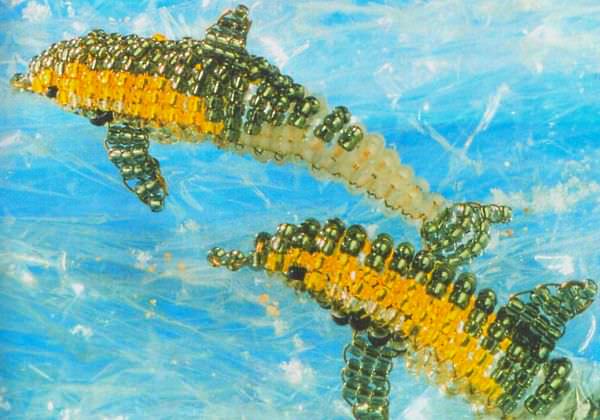
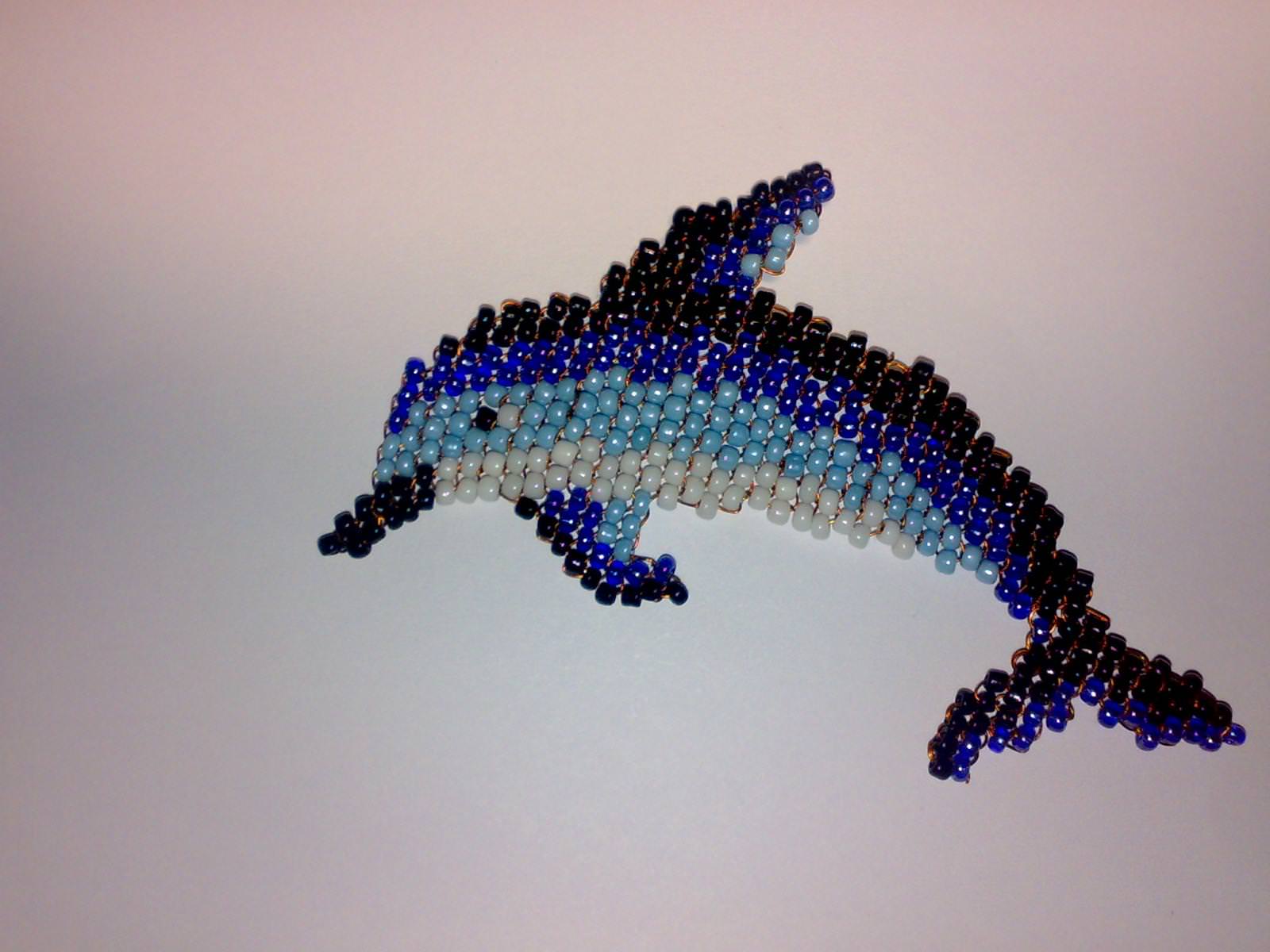
Weaving the dolphin of beads according to scheme
For this purpose we will prepare:
To weave a dolphin of beads will require a scheme. You will find it in this article and in the video that is attached to our lesson. When viewing a video, it is advisable to draw this diagram for yourself and put it nearby in a place that is visible to you. Such a scheme is necessary not only for beginners, but also for experienced masters. But do not forget that you will need all the rows available in this scheme, weave twice, otherwise your dolphin will turn out not volume but flat. And one more feature is that the fins of the dolphin must be weaved separately from its body.
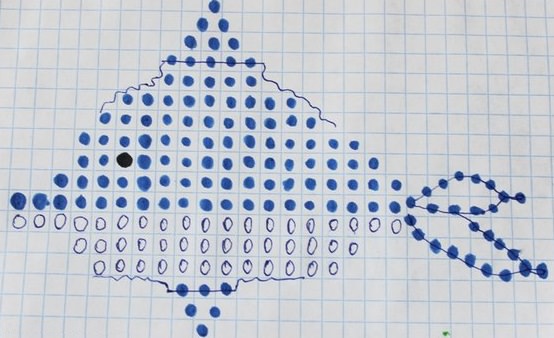
We start with the fact that we take a long sectionFishing lines. We collect on this fishing line one gray, and one blue bead, and push them down. Then we collect another blue, and one gray bead, and the other end of the line we draw through their holes in the opposite direction, making the line crossed. Simply put, the two ends of the line form a cross. After this, you need to pull the two lines of the line, stretching the two beads, the last ones, to the two beads that were first.
We continue the weaving in accordance with howOur scheme is built. We select the following two beads, blue and gray, and in the same way we pass the second end of the line in them, tightening both ends together. And we repeat the same operation one more time. This weaving is very simple, and even a child can weave it. If you follow correctly all the techniques of weaving, then you have the line folded, leading the beads behind, and forming a three-dimensional shape.
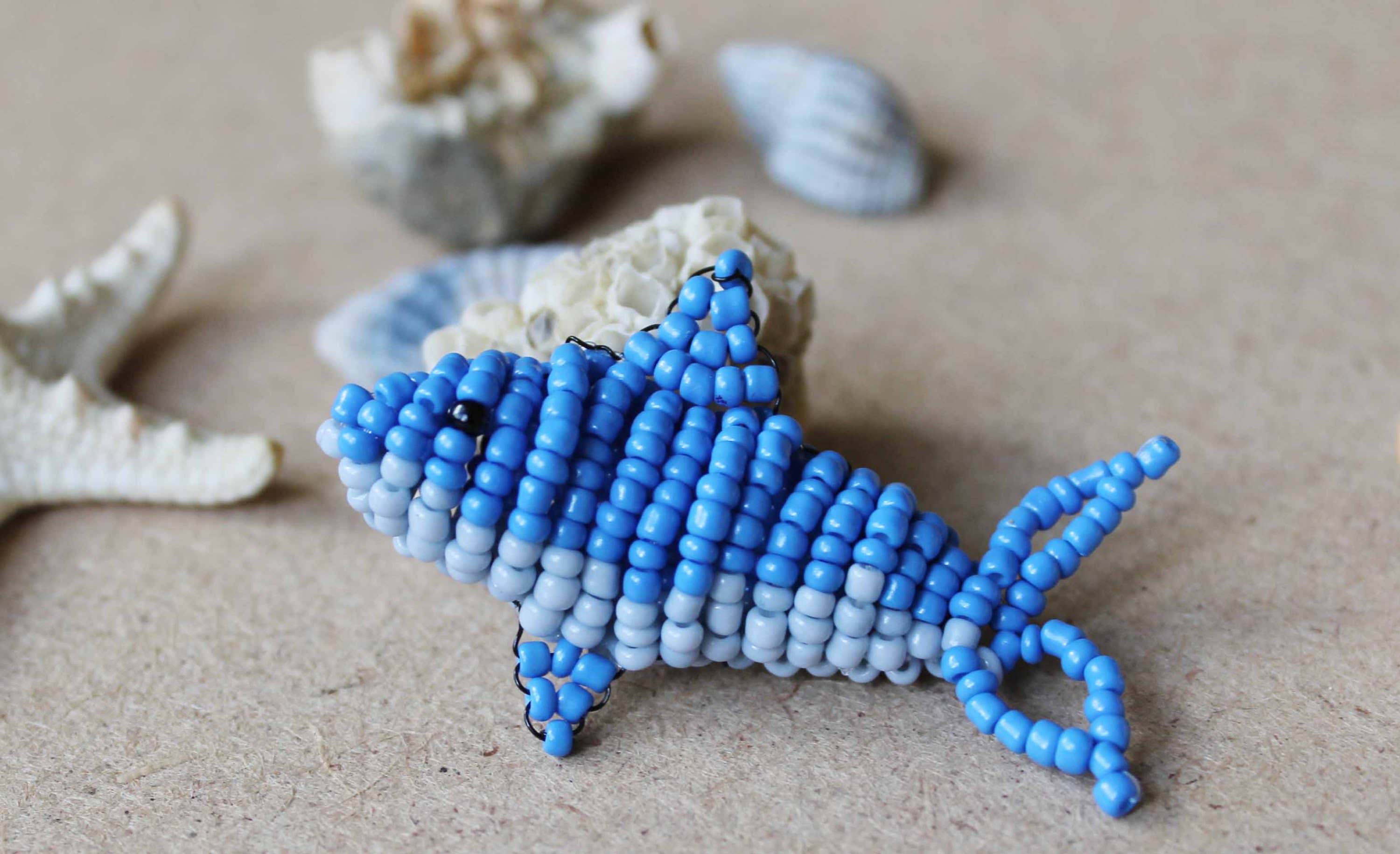
We continue the weaving, following the scheme that we have. We select two blue and one gray bead, we reverse the second end of the line, and tighten both ends. Now we need to make the same set of beads, and tightening the cruciform ends of the line. As we have already mentioned, all the ranks need to be duplicated, otherwise our figure will not turn out to be voluminous. At this stage of weaving, you can already clearly distinguish the dolphin's nose. And it does turn out to be voluminous.
Next, we need to repeat the previous series, becauseThat it is necessary to give the figure a dolphin. We have already noted that each series available on the diagram must be performed two times to give the product volume. This rule is strictly observed. The technique of weaving is the same as in the first rows, repeated throughout the work. So, perform the following series, which describes our scheme:
- 4 beads of blue and two gray (two times);
- 5 beads of blue and three gray (two times);
- 6 beads of blue and three gray (four times). Here it should be noted that in the first and second of the four given series we have to type one black bead, which will be the eye of the dolphin;
- 8 beads of blue and three gray (ten times);
- 6 beads of blue and three gray (four times);
- 5 blue beads and three gray beads (twice);
- 4 blue and two gray (twice);
- 3 blue and one gray (twice);
- 2 blue and one gray (twice).
The number of rows corresponds to the number of times in the description. Two times denotes two rows of weaving. When you have woven all the lines in the chart, you will have a dolphin body without fins and tail.

At the next stage of the work we will weave a dolphin tail.
To do this, we need to collect sixBlue beads. Now, according to the scheme, we need to make a turn. To do this, we will add two more beads, and in the first of them we will pass the fishing line backward. We get one bead in the role of a stub, which we pull to the other beads.

The line we got turned into anotherSide of weaving. On this fishing line again we will string six beads. After this, our fishing line is fixed in one of the beads of the near row. This is only half the tail. The second half of the plait is the same as the first, after which we get a fully finished dolphin tail. The remaining line is fixed, passing it through the nearest beads, and then tying it to knots.

Now we start making fins, usingOur scheme. We will make the lower fin, and then fasten it to the body of the dolphin. To do this, take a small piece of wire, which is easy to cut off with scissors. We begin to weave the fin from its lowest point. We'll fence our wire in half, put on a blue bead on it. Then we put the other end of the wire back into it, and tighten the ends. Then you need to string two blue beads, and in the same technique, tighten them with the two crossed ends of the wire.
As you can see, the weaving technique is the same asWhen weaving the dolphin's body. The only difference is that we do not double the number of rows, because we need a flat, rather than a three-dimensional shape. Now we put on three blue beads, and just tighten them with wire. Our fin is ready, and now it remains only to attach it to the torso of the dolphin.
Since this fin is lower, it must be fastenedTo the abdomen of the dolphin. This is done very simply. Using the two ends of the wire on which we weaved the fin, attach it to the beads on the belly of the dolphin, passing this wire through various beads, as it is most convenient. The same method of weaving is also used in the manufacture of the upper fin. When it is done, our work is finished.

And now you can fasten the dolphin to the keys in any accessible way, or use it for any purpose.


